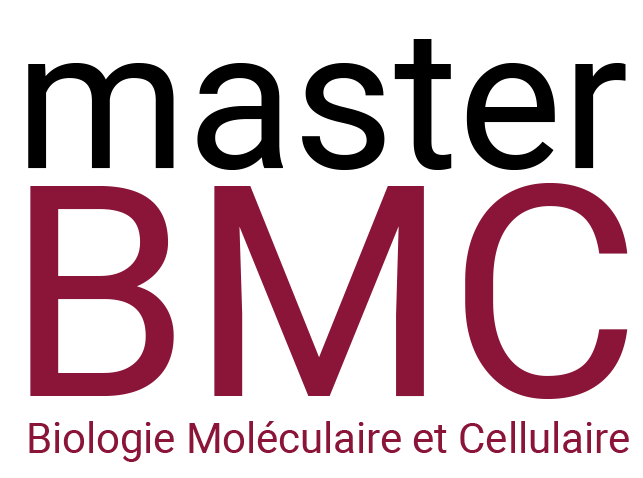DETERMINE THE CONTRIBUTIONS OF RNA M6A METHYLATION TO SALIVARY GLAND
Responsables du Stage : Dr. Rami Bechara & Dr. Julien Diana
rami.bechara@universite-parissaclay.fr et Julien.diana@inserm.fr
INSERM
Résumé du Projet de Stage
Sjögren’s syndrome (SjS) is an autoimmune disease characterized by lymphocytic infiltration of the exocrine glands, particularly the salivary and lacrimal glands 1. The current therapies for SjS are often used on the basis of experience rather than evidence 2. Our team has demonstrated that salivary gland epithelial cells (SGEC) are not a passive victim in this disease and are actively involved in SjS 3,4.
Recently, several immune mRNAs were shown to carry a methylation at the N6 position of adenosine, called m6A. m6A is added to specific RNA by methyltransferases termed ‘writers’, which can be reversed by ‘erasers’. Diverse ‘readers’ bind to m6A and impact RNA stabilization/translation. Targeting the interaction between RNA binding proteins (RBPs) and their targets has potential to be an effective strategy to correct gene expression associated with disease 5-7. Hence, epitranscriptome-targeting drugs may hold promise given the ability to target the enzymes that write or erase these modifications 5,8. However, the immunological ramifications of these m6A marks have been largely overlooked, and to date nothing is known regarding the role of m6A machinery in SjS.
Preliminary data from the lab showed a significant increase in the m6A writer METTL14 in sorted SGEC from SjS vs controls. Although none of the existing mouse models of SjS recapitulate all SjS complexity, they have extensively elucidated the pathogenesis of the human disease 9. Here, we will analyze the role of m6A pathway in spontaneous and inducible models of SjS. TASK 1 – Investigate the expression of m6A machinery in salivary glands (SG) of SjS mice. Examining m6A writers (METTL3, METTL14, WTAP) and erasers (FTO, ALKBH5) expression in SG of mouse models of SjS at the critical steps of disease development using RTqPCR. Task 1 will be mainly performed in Inserm UMR1184. Sample collection will take place in Inserm U1151. TASK 2 – Investigate the therapeutic potential of targeting the m6A pathway in mice model of SjS. Here, we will use the newly-developed molecule STM2457, an inhibitor of the enzymatic activity of METTL3 8. Task 2 will be mainly performed in Inserm U1151. Successful completion of the proposed studies will help establish the m6A pathway as a possible future therapeutic target for SjS
Dernières Publications en lien avec le projet :
1- Nocturne, G. & Mariette, X. Advances in understanding the pathogenesis of primary Sjogren’s syndrome. Nat Rev Rheumatol 9, 544-556, doi:10.1038/nrrheum.2013.110 (2013).
2- Seror, R., Nocturne, G. & Mariette, X. Current and future therapies for primary Sjogren syndrome. Nat Rev Rheumatol 17, 475-486, doi:10.1038/s41584-021-00634-x (2021).
3- Verstappen, G. M., Pringle, S., Bootsma, H. & Kroese, F. G. M. Epithelial-immune cell interplay in primary Sjogren syndrome salivary gland pathogenesis. Nat Rev Rheumatol 17, 333-348, doi:10.1038/s41584-021-00605-2 (2021).
4- Riviere, E. et al. Interleukin-7/Interferon Axis Drives T Cell and Salivary Gland Epithelial Cell Interactions in Sjogren’s Syndrome. Arthritis Rheumatol 73, 631-640, doi:10.1002/art.41558 (2021).
5- He, P. C. & He, C. m(6) A RNA methylation: from mechanisms to therapeutic potential. EMBO J 40, e105977, doi:10.15252/embj.2020105977 (2021).
6- Liu, N. & Pan, T. N6-methyladenosine-encoded epitranscriptomics. Nat Struct Mol Biol 23, 98- 102, doi:10.1038/nsmb.3162 (2016).
7- Zaccara, S., Ries, R. J. & Jaffrey, S. R. Reading, writing and erasing mRNA methylation. Nat Rev Mol Cell Biol 20, 608-624, doi:10.1038/s41580-019-0168-5 (2019).
8- Yankova, E. et al. Small molecule inhibition of METTL3 as a strategy against myeloid leukaemia. Nature, doi:10.1038/s41586-021-03536-w (2021).
9- Gao, Y., Chen, Y., Zhang, Z., Yu, X. & Zheng, J. Recent Advances in Mouse Models of Sjogren’s Syndrome. Front Immunol 11, 1158, doi:10.3389/fimmu.2020.01158 (2020).
Ce projet s’inscrit-il dans la perspective d’une thèse :
oui x
si oui type de financement prévu : Ecole doctorale
Ecole Doctorale de rattachement : ED 569 – INNOVATION THÉRAPEUTIQUE: DU FONDAMENTAL À L’APPLIQUÉ –Université Paris-Saclay
Equioe d’accueil : Inserm UM1184 & Inserm UMR 1151
Intitulé de l’Unité : Center for Immunology of Viral, Auto-immune, Hematological and Bacterial diseases. Inserm UMR1184- Équipe Laboratoire des Maladies Auto-immunes & Institut Necker- Enfants Malades (INEM); Voies de l’immunité innée et adaptative dans l’autoimmunité et l’autoinflammation
Nom du Responsable de l’Unité : Dr. Roger Le Grand
Nom du Responsable de l’Équipe : Pr Xavier Mariette UM1184 ; Dr. Julien Diana UMR 1151
Adresse : 63 Rue Gabriel Péri, Faculté de Médecine, Université Paris-Saclay, 94270 Le Kremlin-Bicêtre

